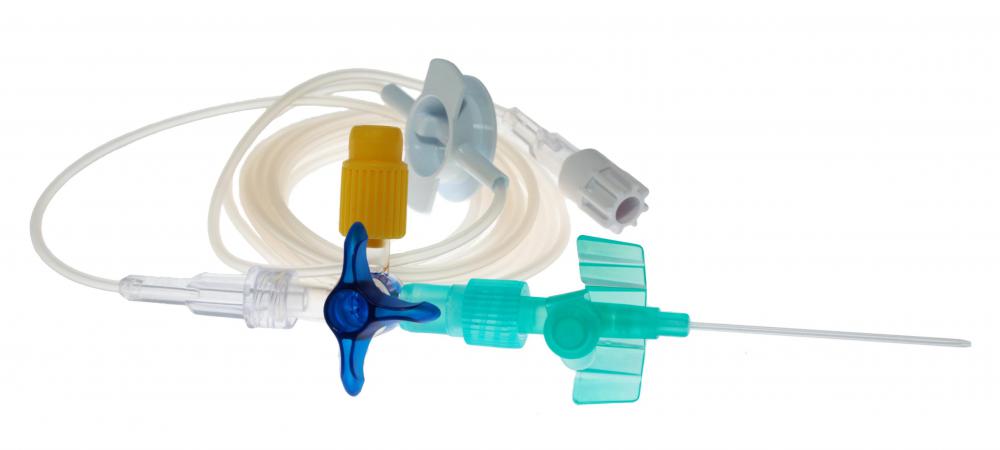At WiseGEEK, we're committed to delivering accurate, trustworthy information. Our expert-authored content is rigorously fact-checked and sourced from credible authorities. Discover how we uphold the highest standards in providing you with reliable knowledge.
What is an Injection Needle?
An injection needle is the part of a syringe that is used to pierce the skin. It is hollow, so that medication can flow through it. Needles vary in size, depending upon the type of medication and where it is being injected.
A syringe may be used to administer a wide variety of medications. Intramuscular (IM), intravenous (IV), subcutaneous (SQ), and intradermal (ID) are the most common types of injections. Each type of injection requires a specific injection needle. These vary by the type of bevel, length, and gauge or diameter. The higher a needle’s gauge, the thinner the needle.

A typical injection needle for subcutaneous use, as in those used for insulin injections, is ½ in (12.7mm) to 5/16 in (5mm) in length with a gauge of 28 to 31. Intramuscular injections often require an injection needle of around one in (25.4 mm), but vary greatly depending on the size of the person receiving the injection. IM needles are offered in gauges ranging from 22 to 25. Intradermal injections are used in tuberculosis testing and use a ¼ to ½ in (6.35-12.7mm), 25-27 gauge needle. IV needles are typically shorter with no greater than a 25 gauge.

A special injection needle may be used to place a cannula within a vein, for attachment to a peripheral IV line for administration of fluids or medications on a continuous basis. The needle is sheathed by a cannula and, when the needle is removed, the cannula stays in place in the vein. Once the cannula is properly positioned, it will be secured in place and used to administer medications or fluids directly into the bloodstream.

In many places, the sale of needles and syringes is strictly monitored and may not be legally purchased without a valid prescription. This is due to the potential for use with illegal drugs. Some agencies have instituted needle exchange programs to discourage needle sharing and to decrease the risk for disease transmission.
Most often, an injection needle will be disposable. This minimizes the risk for contamination of infection related to reusing. Proper disposal, in a thick-walled, properly labeled biohazard sharps container is important to prevent injury after the needle is discarded.

While an injection needle is most commonly seen in a medical setting, many patients use them to self-administer medications, such as insulin or epinephrine. It is important for those administering injections at home to use appropriate precautions while preparing medication for injection, as well as following appropriate procedures for the disposal of used needles. Sharps disposal containers may be obtained at pharmacies.
AS FEATURED ON:
AS FEATURED ON:















Discussion Comments
I''m a wuss when it comes to having blood drawn. I admit it. So, when I have bloodwork, I ask for a "butterfly" needle, which is a very small one -- the smallest they can use to draw blood. I have good veins, so getting out one of the kebab skewers isn't necessary.
I have found that never seeing the needle is a good way for me to approach an injection or getting blood drawn. I close my eyes the whole time. As I said, I'm a wuss and a big baby about it, even though I have to have bloodwork three or four times a year. That's just how I have to get through it.
Post your comments